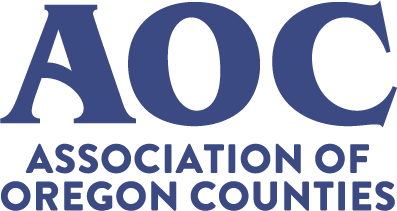
Apr 28, 2023 | Governance, Revenue, & Economic Development
Tourism is a boon to any community lucky enough to have exquisite natural beauty, fun recreational activities, beaches, or other amenities that entice tourists. It’s often considered a coveted “export,” because it infuses dollars earned elsewhere into the local economy. Vacationers tend to be more affluent than locals and in the mood to splurge, giving their patronage of local restaurants, bars, shops, and artisans an outsized impact.
However, tourism presents a host of challenges. The population of many localities balloons during the tourist season, putting pressure on local public safety agencies, infrastructure, and other critical public services. Also, housing affordability problems emerge as locals are thrust into competition for housing with wealthy vacation home buyers, retirees, and vacation rental operators. Tourist destinations across the world have grappled with these challenges for decades; many communities appreciate the benefits of tourism, but some would rather not share their slice of heaven with hordes of vacationers.
Airbnb, founded in 2008, is credited with sparking a revolution in the tourism industry and spawning a proliferation of vacation rentals throughout the world, which have become a particular focus of policymakers and academic researchers. Vacation rentals are frequently blamed for problems such as illegal parking, excessive partying, noise, and other nuisances. Regulations in Oregon range from complete bans to licensure requirements and other measures aimed at minimizing neighbor conflicts. Vacation rental operators have recently challenged certain local regulatory efforts in court: Clatsop and Lincoln counties are currently in litigation over claims that their moratoria improperly curtail or extinguish non-conforming uses as per ORS 215.130(5). HB 3381 was filed in the 2023 Legislative Session to clarify that vacation rental regulations are business regulations and not land-use regulations, but it didn’t get much traction.
In most states, tourists help pay for public services and infrastructure through gas, sales, and tourist taxes (transient lodging taxes). With no sales, gas, and tourist taxes are the only ways that tourists help pay for their impacts on infrastructure and public services in Oregon. But the lodging industry persuaded the State Legislature to restrict local governments’ use of their tourist tax receipts about 20 years ago: ORS 320.350 dictates that at least 70 percent of tourist tax proceeds must be spent on promoting tourism (i.e. advertising) or tourism-related facilities. Given other state laws constraining local property tax revenue, tourist destinations across Oregon have struggled to afford adequate infrastructure, policing, firefighting, and many other basic public services.
Over the years, the Legislature has considered giving local governments flexibility around how they can spend their tourist tax proceeds, with little success. This session, HB 2494 was introduced, which would have allowed local governments to levy a tourist tax up to three percent, all of which could be directed to public safety services, but the bill is apparently dead. Another bill considered this session was HB 3589; as amended, it would have created a task force to study and recommend legislation to assist local governments with regulation and taxation of short term rentals. That bill is also apparently dead, but House Committee on Housing and Homelessness Chair, Representative Maxine Dexter (D-Portland), has announced plans to convene a work group to consider these issues. AOC hopes to participate, and will continue monitoring related policy developments.
Contributed by: Michael Burdick | Legislative Affairs Manager

Apr 27, 2023 | AOC Business Partner
Regional Solutions Visits Gilliam County
The Regional Solutions staff in the governor’s office convenes together once a month to think big about the program, share notes on problem solving, and appreciate the context of our colleagues’ work. Our plan is to periodically hold these gatherings in the field to connect to local communities and see the practical applications of our work. We were very grateful to Gilliam County for hosting us for the first of these field meetings during the Kotek Administration. The team had the opportunity to tour the Columbia Ridge Landfill—the largest landfill west of the Mississippi River—and the Chemical Waste Management Site near Arlington. The Waste Management staff also shared plans to create a renewable natural gas facility with carbon capture technology that will use gas byproduct from the landfill to create energy and limit greenhouse gas emissions. The team discussed Waste Management’s long history and engagement with the county, including recent partnership with the county to help address housing shortages for Waste Management’s workforce. Many thanks to the Waste Management team for their hospitality.
Over lunch, the team also had the chance to catch up with Port of Arlington Director Jed Crowther, who updated us on key initiatives within the county. Director Crowther shared updates on the many projects that the county, port, and other partners are engaged in, including the rehabilitation of the Condon Elementary School for housing and other community uses (utilizing Brownfields funds from Business Oregon), a plan by the Port to create shovel ready land in Arlington for further residential development, and collaborative efforts to create more affordable childcare opportunities. On all of these fronts, the county continues to make critical and large investments. The Regional Solutions team is engaged in many of these efforts, and Nate Stice and Courtney Crowell, who share coverage for Gilliam County, were able to share context on several projects.
Again, a big thank you to Director Crowther for joining us for a rich discussion, and to Gilliam County and Judge Liz Farrar Campbell for allowing the use of their facilities.
Greater Eastern and Northeast Regions
- City of Echo Pedestrian Safety Bridge: Within the city of Echo there are two sets of railroad tracks that cut through the community, with one of the tracks becoming a parking lot for trains in the area. Unfortunately, the Echo school is right near the tracks and the nearest pedestrian crossing is almost a half mile down the road, so many times kids end up crossing the tracks and when there are trains parked there, they can’t see and it becomes a huge safety concern. The Oregon Department of Transportation (ODOT) has partnered with the city to put $2.5 million towards planning and design of a safety solution. Representative Bobby Levy (R-Echo) is requesting $4 million to create a pedestrian bridge that would run from the school, over both sets of train tracks to the other part of town. Regional Solutions will continue to follow this issue and help with either the implementation of the pedestrian bridge or looking for other solutions.
- Umatilla Basin Water Quantity Issues: Regional Solutions brought together the Oregon Water Resources Department (OWRD), the Port of Umatilla and the Mid-Columbia Water Commission to discuss concerns related to an instream lease of the Port of Umatilla being used for mitigation by the Mid-Columbia Water Commission in order to use water out of the Columbia River for irrigation. Regional Solutions is working to improve communication and find a path forward for this year’s mitigation efforts. Both OWRD and the Mid-Columbia Water Commission are working on finding solutions over the next few days to solve this issue in the short-term.
- Confederated Tribes of the Umatilla Indian Reservation/City of Pendleton Transportation Planning: Regional Solutions and ODOT convened a meeting between the city of Pendleton and the Confederated Tribes of the Umatilla Indian Reservation (CTUIR) to discuss the large-scale transportation projects surrounding exits 209 and 216 and Highway 331. For the past few years both CTUIR and the city of Pendleton have individually applied for federal funding through the Rebuilding American Infrastructure and Sustainability Equity (RAISE) grant program and haven’t been successful. The city of Pendleton is trying once again with matching assistance from ODOT but should they prove not successful this year, we are beginning to have conversations about how the three entities (CTUIR, city of Pendleton and ODOT) might be able to coordinate together to make a joint application for a larger and more comprehensive regional transportation project. Not only are their freight issues in this region but there is significant safety concerns associated with this larger project. The hope is that by working together we might have a better shot at the federal funding. RS will continue to help strengthen the working relationship and see if there are ways to work together over the next year.
- Baker City Wastewater Project: Regional Solutions met with both the Department of Environmental Quality (DEQ) and Baker City recently to discuss their ongoing challenges with their wastewater treatment project. The good news is that DEQ has put out for public comment the city’s Recycled Water Plan which, once approved, will allow the city to land apply their wastewater on land approved by DEQ. This public comment period will last for 30 days and if the city feels they are close to overflowing their lagoons, DEQ has said they will approve a special use permit within 48 hours to allow the city to land apply wastewater. We also discussed what DEQ will need to allow additional land to be brought into land application (medium term solution) and the city is working on providing that information. Regional Solutions will continue to bring the city and DEQ together monthly to discuss next steps and ensure that communication is going smoothly.
- Verde Light Community Solar Project: Regional Solutions has been working for the past couple of weeks with a community solar project in Ontario that is running into regulatory challenges between state agencies. This is a small solar project that has received a $900,000 Oregon Department of Energy (ODOE) grant and is about to receive a $1 million United States Department of Agriculture (USDA) grant to provide solar for the city of Ontario. The land is zoned heavy industrial and was planned to be a truck stop prior to this community solar project. This project has gone through the National Environmental Policy Act (NEPA) to account for federal environmental needs, and the land has been deemed not a wetland by the U.S. Army Corps of Engineers. However, the state has determined that the land includes a wetland and there are regulatory challenges between the Department of State Lands (DSL) and DEQ to issuing a final permit. Regional Solutions is working with DEQ and DSL to try and find a path forward for this project.
North Central and North Coast Regions
- Dog River Pipeline: The City of The Dalles has engaged the Regional Solutions Team over the last several years on a project to replace 3.5 miles of aging wooden water supply pipeline that serves as the main water supply for the city. The former pipeline leaked nearly a million gallons a day. The project is designed to create more resilient infrastructure for the community as well as supporting environmental values as well. In particular, the pipeline will include new fish passage and screening systems at the pipeline intake. The project includes a $1 million investment from the Oregon Water Resources Department and financing from Business Oregon.
- Update: The team continues to work with the city through the permitting and construction of the
project and met with the city this week to help navigate part of the process.
- Childcare Center Project: Regional Solutions has been participating in an effort to house a new childcare center in The Dalles. The project is led by the Columbia Gorge Education Service District and Columbia Gorge Community College Child Care Resource and Referral. Regional Solutions helped the college to secure a legislative allocation to move the project forward. The project group has spent the last year looking at economic models, partnerships, and potential locations, and have identified an underutilized school district property as a potential site for the project: the Chenowith Middle School site.
- Update: Regional Solutions team members rejoined the project steering committee and received an update on engineering and cost estimates for rehabilitation of the site. The middle school will require significant investments to put it into service as a childcare center. The team will work with the Educational Service District (ESD) and college to explore funding option both for repair of the property and ongoing operations.
- City of St. Helens: The City of St. Helens has undertaken a comprehensive look at redeveloping their downtown waterfront district. Of particular interest are brownfield sites where Boise Veneer and Boise White Paper were once located. Three key waterfront properties totaling over 250 acres that provide catalytic redevelopment opportunities for
the city. The city plans to restore the connection between downtown St. Helens and the Columbia River, provide public access to the waterfront, and preserve the natural and cultural heritage of St. Helens.
- Update: Thanks to the City of St. Helens for taking the time to get me up to speed on the project and share the many other amazing efforts under way in the community.
South Coast & Southern Oregon Regions:
- Roseburg Forest Products announced on Friday a suite of planned investments in Southern Oregon totaling $700 million over the next four years. These investments include the creation of two new, state-of-the-art factories at the company’s Dillard, Oregon complex. The new Dillard Medium Density Fiberboard (MDF) plant will make MDF and High Density Fiberboard (HDF) panels, and the planned Dillard Components facility will convert specialty MDF made at the company’s Medford, Oregon plant into Armorite™ Trim, a new exterior trim product developed by Roseburg Forest Products. Both new plants are anticipated to begin operations in 2025 and will employ approximately 120 people once completed. In addition to these new plants, Roseburg intends to invest $200 million into modernizing its plants in Riddle and Coquille. The Regional Solutions ream worked hard to help encourage this investment: after working with the company to understand their business needs, which included funding and regulatory certainty, Business Oregon awarded a grant of $3 million from the Emerging Opportunity Fund to help purchase machinery for the $45 million Dillard Components plant, while the Department of Environmental Quality’s Air Quality team provided technical assistance around air quality permit application preparation and timing.
Resources
Workforce Ready Grants Available:
The Oregon Higher Education Coordinating Commission (HECC) has opened the Request for Applications (RFA) for Workforce Ready Grants, Round Two: Innovation in Workforce Programs to support the education and training needs of Oregonians through Future Ready Oregon.
Future Ready Oregon is a comprehensive $200 million investment package that supports the education and training Oregonians need for good-paying jobs, prioritizing underserved and historically marginalized communities. You can learn more about Future Ready Oregon on the HECC Future Ready Oregon webpage. Workforce Ready Grants are the largest component of Future Ready Oregon and will be available on a phased or rolling basis through 2024. In round one, the HECC released $10 million in capacity-building grants to broaden the type and number of organizations that comprise Oregon’s workforce system.
The second round focuses on innovative and collaborative workforce development programming and partnerships that center the needs of Oregon’s historically underserved communities. Up to $35 million may be awarded to develop education and training programs that connect individuals to the resources they need for good-paying jobs and meaningful careers. Investments will advance opportunities to recruit and retain a diverse workforce in key sectors of Oregon’s economy— healthcare, manufacturing, and technology.
Who is Eligible
The HECC welcomes applications from community-based organizations and workforce service providers that administer workforce programs in the healthcare, manufacturing, or technology sectors and prioritize equitable program participation by individuals from priority populations.
How to Apply
The RFA document—which details eligible activities, timelines, guidelines, and requirements for applications—can be found on HECC’s Grants and Contracts webpage. The RFA has been posted in both English and Spanish and can be made available in additional languages upon request. The application deadline is June 23, 2023.
Support for Applicants
Potential applicants have access to technical assistance providers who can help them understand the terms and requirements of the RFA, as well as provide feedback on application materials, free of charge. Contact information for technical assistance providers is included in the RFA.
Additionally, HECC will host four virtual information sessions. These sessions are free, and participation is optional but encouraged.
- Session 1, Monday, April 17, 1-2 p.m.
- Session 2, Tuesday, April 25, 4-5 p.m.
- Session 3, Wednesday, May 3, 1–2 p.m.
- Session 4, Wednesday, May 10, 4:30–5:30 p.m.
Once you have registered, you will receive an email with the meeting link. Please email FutureReadyOregon@hecc.oregon.gov if you do not receive the link, or if you have additional questions.
Contributed by: Regional Solutions

Apr 24, 2023 | AOC Business Partner
Portland State University (PSU) Center for Public Service Fellowships Program has recruited exceptionally qualified, trained, and diverse fellowship candidates from prestigious institutions throughout the U.S. to serve as project managers for Oregon’s public sector in 2023-24.
Our fellows provide skill capacity near-term to ensure critical projects are completed, despite staffing constraints. Candidates are prepared to support counties in areas such as research and analysis, community engagement, program evaluation, and so much more.
The Hatfield Resident Fellowship (program cost: $45,200) is an eight-month commitment for recent Master’s and Ph.D. graduates. The Oregon Summer Fellowship (cost: $11,030) is a 10-week program designed to accommodate currently enrolled graduate students.
Our applicants are screened rigorously and have a strong record of scholarship and demonstrable interest in areas including climate policy, health equity, public administration, and beyond.
There have been multiple fellowship projects sponsored by counties in recent years. Seeking to develop succession plans for key positions within their organization, a county contracted with PSU for an Oregon summer fellow to assist with a review of best practices, the development of new institutional relationships, and an update to the county’s workforce processes. Ultimately, the fellow provided a significant value-add in developing recommendations for the county’s planning.
Separately, an Oregon county identified a need to implement a review of fee practices within their internal business operations. Requirements included a review of organizational structure, service levels, and quality control and assurance. By conducting interviews with managers, aggregating the data, and developing an effective dashboard system, the fellow supported the county’s efforts to improve programmatic efficiency.
Our fellowships are an excellent opportunity for your county to gain support for important projects while also providing an opportunity for individuals interested in public service to gain valuable work experience. Our matching process includes an initial candidate identification, a series of interviews, and ultimately a match. From there, PSU will assist in completing an inter-governmental agreement and the training of your new fellow prior to their project start date.
Those interested in learning more about the sponsor process are encouraged to visit our website (click link) or submit a sponsor application (click link). Alternatively, please contact Meaghan Lingo, program administrator (mlingo@pdx.edu), or our office account (psfellows@pdx.edu) with any questions.
Contributed by: The Center for Public Service Fellowships team.
*Sponsored content provided by AOC Business Partner.

Apr 24, 2023 | Natural Resources
On April 14, the United States Forest Service (USFS) announced the release of $228 million for the Secure Rural Schools (SRS) payments, with $45.6 million coming to Oregon counties. A few days after, the Bureau of Land Management (BLM) announced $25.6 million in payments to Oregon counties under the Secure Rural Schools and Community Self-Determination Act. This means over $70 million will be coming to Oregon to help local governments remain operational.
Counties rely on SRS payments to provide numerous critical services for their communities such as infrastructure, education, conservation projects, search and rescue missions, and wildfire prevention programs. For USFS SRS payment details by county, click here – Oregon is on page 55.
“I want to give a huge thank you to Senators Wyden and Merkley for their continued efforts and sponsorship of the Secure Rural Schools Program,” said Gina Nikkel, AOC executive director. “$70 million coming to Oregon counties to help administer programs and provide essential services to our citizens is greatly appreciated. We cannot say thank you enough for all their continued efforts and the strong partnership we have.”
In the years following the establishment of the USFS in 1905, the national forest system tripled in size across the nation. To compensate counties for potential losses of tax revenues, Congress approved the Act of May 23, 1908. This Act allowed the USFS to distribute a portion of revenues from timber sales, mineral leases, recreation, grazing, and more to the counties containing the national forests and grasslands. In 2000, Congress passed the Secure Rural Schools and Community Self-Determination Act to help stabilize fiscal support for rural county services. In 2021, the Bipartisan Infrastructure Law reauthorized SRS payments through Fiscal Year 2023.
Public land counties rely on programs like SRS and Payments in Lieu of Taxes (PILT) to help maintain their budgets while bearing the responsibility of non taxable federal lands. While these payments represent a fraction of what counties would collect from property taxes and timber receipts, they are critical for local governments to meet their governing missions. The last time authorization for SRS lapsed in Fiscal Year 2016, counties saw an 80 percent decrease in federal forest payments.
Contributed by: Branden Pursinger | Legislative Affairs Manager

Apr 24, 2023 | AOC Business Partner
Recently, Amazon announced an agreement with Umatilla Electric Cooperative (UEC), the electric cooperative that serves Amazon Web Services (AWS) in Umatilla and Morrow counties. This agreement creates an innovative solution that safely and reliably powers data centers in the region and keeps Amazon on a path to achieving 100 percent renewable energy by 2025.
The agreement allows Amazon to take on the responsibility of selecting the energy supply that powers its data center operations, including from renewable energy resources. UEC continues to be an essential partner and provider of reliable utility service to AWS data centers in UEC’s service territory. Amazon’s energy supply from its utilities, combined with its renewable energy procurement across the United States, has enabled several AWS data center regions — including its U.S. West (Ore.) Region—to be powered with at least 95 percent renewable energy.
“We’re proud of our work in Oregon, and this new agreement with Umatilla Electric Cooperative is the latest example of how we’re working closely with the community. In addition to AWS investing over $15 billion in the state economy since 2011, and recycling up to 96 percent of AWS cooling water to provide millions of gallons of water to local farmers each year, we’re now able to directly invest in renewable energy across the Pacific Northwest to help power AWS operations in Oregon. We’re grateful for the collaboration with UEC, which will help us stay on a path to meeting 100 percent renewable energy by 2025,” said Charley Daitch, director of Energy and Water at AWS.
Historically, utilities have been responsible for sourcing an energy supply for their customers. To enable a faster transition to renewable energy, Amazon has been innovating by working with utilities to directly bring new wind and solar projects onto the grid.
Amazon has been the world’s largest corporate buyer of renewable energy every year since 2020 — sending a demand signal that also helps to further increase supply. Amazon is committed to reaching net-zero carbon by 2040 and is on a path to powering its operations with 100 percent renewable energy by 2025. As of today, Amazon has already reached more than 85 percent renewable energy globally across its offices, fulfillment centers, stores, and AWS data centers.
Contributed by: Amazon Staff
*Sponsored content provided by AOC Business Partner.





